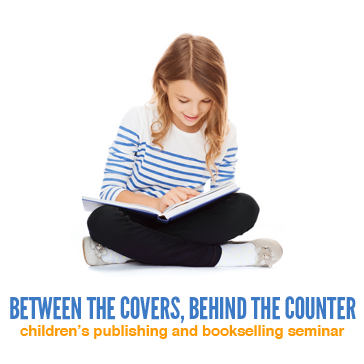
19/03/2019
On Tuesday 5 March a group of 50 booksellers, publishers and authors gathered at Allen & Unwin, Sydney for our fifth Between the Covers, Behind the Counter Children’s Bookselling and Publishing seminar. Organised by the APA’s Children’s Publishing Committee, Fiona Stager and the ABA, the program was packed for this unique opportunity to focus on what’s trending in the world of children’s books.
The day was spent covering publishing and selling children’s and YA books, developments in cover design, the latest sales statistics and personal stories from the sector.
The opening address was delivered by Davina Bell, writer (All the Ways To Be Smart), editor and passionate advocate for children’s books and promoting a love of reading. Davina shared her experiences of working across the different aspects of publishing and inspired the audience to consider, as an example, gender and the environment in making books for children.
Julie Winters from Nielsen Book Australia presented a review of 2018 book sales with a focus on the children’s market. Winters shared the good news that children’s book sales continue to grow and was 44% of all book sales in Australia. The stand out category in children’s last year was non-fiction with the sub category of ‘personal development’ with the likes of Stories for Boys Who Dare To be Different leading the way.
This was followed by a fascinating session with Tristan Bancks (author), Astred Hicks (freelance designer) and Zoe Walton (PRH publisher) on the story behind re-design of the Tom Weekly series. Astred explained how kids today are so much more design literate, even down to what fonts they like, and how this now informs her design work. This is especially pertinent when designing for YA with readers having grown up with an Instagram design aesthetic. Insight was shared on the decisions made for both the covers and internal design from Tristan canvasing the kids and teachers at his school visits, to Zoe consulting with the various teams in the children’s division at PRH.
The Behind the Counter session on book buying and selling featured three booksellers: Libby Armstrong (Beachside Books), Paul McDonald (The Children’s Bookshop) and Sarah Young (Children’s buyer, Dymocks) with Penny Evershed (Inventory Manager, Simon & Schuster) asking probing questions. The key message from all three booksellers when it comes to deciding what to buy was to genuinely listen – to reps, your staff, your customers and your community. Other suggestions for keeping up with the thousands of new releases were Goodreads, following other bookshops with similar demographics on Instagram, book awards and book lists (e.g. The Guardian’s best books), and international trends given that we are very much operating in a global market. As Paul pointed out, Australian kids buy bestselling US books they see on social media even if there are local titles that are better.
When it comes to working with schools, both Libby and Paul emphasised how expensive this side of the business can be and involves a lot of hard work both during and after business hours. Unfortunately, this doesn’t lead to a school being loyal to your bookshop, so you really need to consider if this is a path you want to go down.
Another strong message from this session was the importance of handselling especially when it comes to backlist. For Paul, the backlist is determined by his staff who know how to sell what they love.
The day concluded with a discussion on the future of the industry chaired by Anna McFarlane (publisher, Allen & Unwin) with Erin Gough (author), Anna Low (Potts Point Bookshop) and Cristina Capuletto (publishing director, HarperCollins).
Erin spoke about being influenced by ‘the politics of the here and now’ when writing YA fiction as her readers are more engaged (the good side of social media) and have a greater awareness of the issues of the day so this is reflected in what they want to read. When asked what the next big publishing trend was going to be Cristina acknowledged that there’s not going to be anything as big as the paranormal phenomenon around the corner but for now there’s a real focus on middle grade and humour and potentially this could move into YA.
Aside from trends, publishers are always on the look-out for that book with a long shelf life. For Anna, one of the big changes is the way that her customers discover books, and this will only continue into the future. More controversially she suggested that publishers could take a moment before adding to the number of books published every month but did point out a few areas of children’s publishing where there are gaps, such as non-fiction and crime for teens, and good cookbooks.
All in all, it was a fantastic day with lots of opportunities for participants to share ideas and exchange knowledge.
Many thanks to Robyn Huppert from the Australian Booksellers Association for writing up this report.